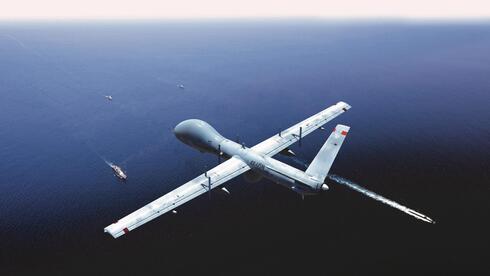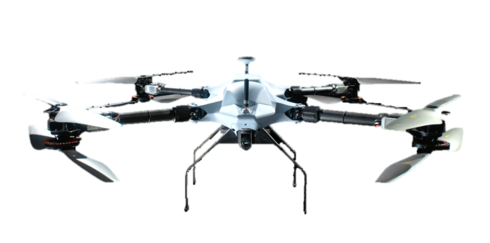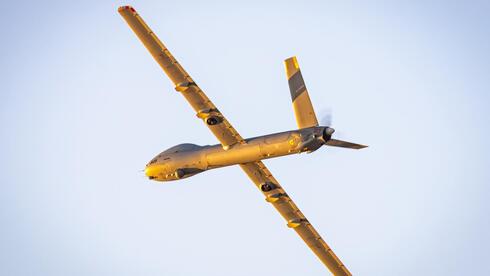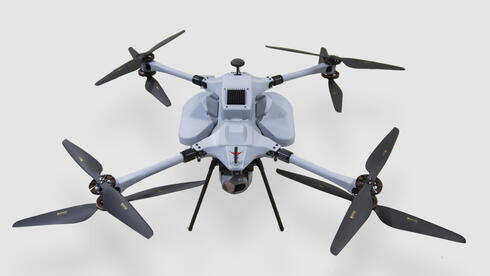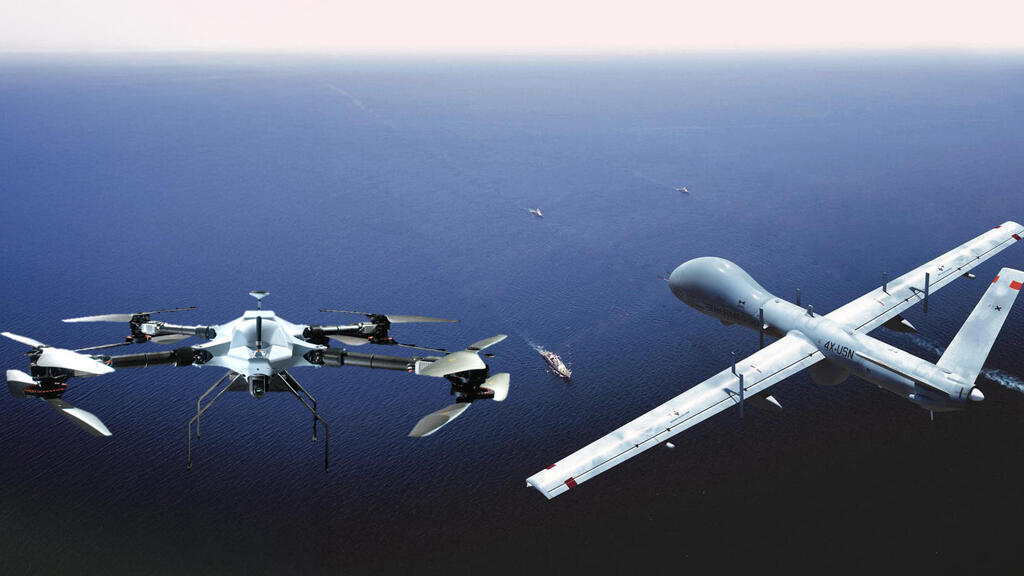
“You can buy from China, but you don’t really know what’s inside,” say Israel’s defense drone giants
As part of CTech’s drone series, Aeronautics and Elbit, two of Israel’s largest defense tech companies, discuss how UAVs and UASs have reshaped and continue to reshape the battlefield, how recent conflict has impacted their development, and what is shaping the future of the sector.
“There is a lot of competition,” said Amit Katz, Director, Head of Drones Line of Business, Mini UAS and Drones Division at Aeronautics. “You can buy from China \[at a\] very, very good price, and you’ll have very reliable drones. But in the end, you don’t really know what’s inside.”
In recent years, the drone industry has rapidly matured. Propelled by modern warfare, from the Russia-Ukraine war to Israel’s more recent war against Hamas and conflict with Iran, its capabilities have been cast into unprecedented focus. From defense powerhouses to specialized platforms, from AI-driven intelligence to counter-drone systems, the unmanned aerial landscape represents one of the most dynamic areas of defense technology.
In Israel, startups are advancing innovations in the sector with an impact that seemingly exceeds their scale, while the battlefield evolves through the integration of these new technologies. Yet giants such as Aeronautics and Elbit, both long-time anchors of the country’s defense tech sector, remain heavyweights in propelling the global impact of Israel’s UAV and UAS capabilities.
Aeronautics, fully acquired by Rafael in 2019, is best known for its Orbiter family of fixed-wing UAVs and its multi-rotor drone line, including the Octoper platform. Elbit, Israel’s largest private defense company, has spent more than three decades developing a comprehensive UAV and UAS portfolio that ranges from quadcopters to high-altitude systems.
Speaking to CTech, Katz articulated how the value of a drone in a war context lies not in the machine itself, but in what it allows its operator to achieve – mission enablers rather than gadgets. “When you have a mission, and you have an operational mission, or you have a special mission, you don’t really need a drone,” he said. “You need something that is going to enable you to accomplish your mission.”
He pointed to conflicts such as Ukraine-Russia as moments that accelerated adaptation and validated the role of drones in combat. “We saw a jump in technology and applications that both sides are making with these platforms.”
For Aeronautics, this translates into a need to “develop and to supply modular systems that will be able to change in accordance with the operation needs,” or in other words “the ability to change things and to adapt your payloads to the platforms.” Katz further stressed how critical adaptability has become for the sector, given how rapidly conditions change on the battlefield: “What they understand today is not what they will need tomorrow and another week and then ahead.”
Locally, against a backdrop of recent and ongoing conflict, both Aeronautics and Elbit describe Israel as a testing ground for their unmanned systems. “Specifically for drones and specifically for our activity is, of course \[that\] you’re starting to face challenges you knew you were going to face, such as GPS problems in the air,” said Katz.
“When you use the UAVs in a very intense conflict, then you learn a lot about what you need to improve in your systems,” Vered Haimovich, VP UAV Systems (UAS) at Elbit Systems, told CTech, referring to lessons learned from recent fighting.
“We did a lot of improvements during the battle… very short cycles of development and production in order to face the battlefield. We actually gather a lot of requirements from our users and implement them on a regular basis. This is why we are on the front edge, let’s say, of UAV technology” she said, citing the company’s comprehensive UAV and UAS portfolio, which is now “incorporating a lot of sensors, a lot of communication and a lot of subsystems which are in the real front edge of technology now.”
Haimovich continued: “I think we learned a lot from it, because we used it in different arenas… and we stretched capabilities of the UAV so we understand what are the gaps, what we need to improve, and on the other hand, what are the good things and advantages and differentiators of our UAVs,” she added.
But for Aeronautics, Katz maintained that one of their key measures of value in this space is the ability to reliably integrate complex payloads and ensure they return safely. “When the customer buys a system from Aeronautics, he doesn’t need the drone. He needs to complete his mission.”
“Normally this mission involves a very dedicated and special payload,” Katz continued. “When the customer buys a system, he wants the system back. He wants to conduct the mission, and he needs the system to come back to him safely. Because if he loses it, it’s not only money… the customer can lose within minutes an achievement that it took him years to create.”
While attributes such as reliability, innovation, mission success and portfolio breadth continue to act as performance benchmarks for the defense giants, Haimovich said the next frontier for these companies and for the unmanned systems sector more broadly is autonomy and artificial intelligence.
Related articles:
“The challenge is to make not just flight autonomy, but also mission autonomy,” she said. “If you can control the mission with UAVs and plan the mission in optimum way, using AI and fly the UAVs in an optimum way, then you gain a lot… It would be more efficient to use.”
“I think that this is the future of UAVs. They will be more and more autonomous.”
Katz, meanwhile, says it’s a future that is already being realized. “You can see more and more companies, startups, innovations that enable the system to conduct and to have more capabilities,” he said. “To give more independence and more abilities to the systems than we have today.”

